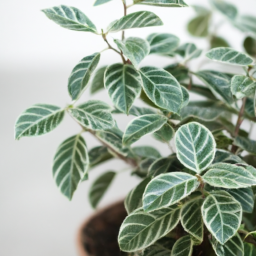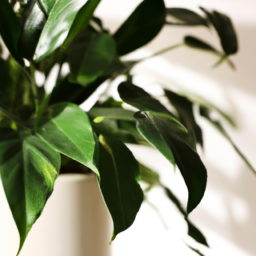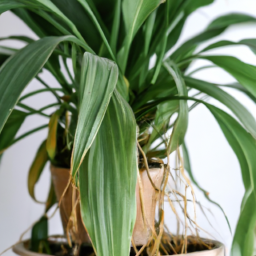
Are you looking for a way to bring some greenery into your home without the hassle of constant maintenance? Look no further! In this blog post, we will be discussing the wonderful world of easy care indoor plants. Whether you have a busy schedule or simply lack a green thumb, these plants are perfect for adding a touch of nature to your indoor space without requiring much effort. So, if you’re ready to bring some life into your home without the stress, keep reading to discover the best easy care indoor plants that will thrive in any environment.
Benefits of Easy Care Indoor Plants
Indoor plants not only enhance the aesthetics of your living space but also provide numerous benefits for your overall well-being. Easy care indoor plants are particularly popular among individuals with busy schedules or those who are new to plant care. These plants require minimal maintenance and can thrive in various indoor environments. In this article, we will explore the many benefits of incorporating easy care indoor plants into your home or office.
Improved Air Quality
One of the significant advantages of easy care indoor plants is their ability to purify the air by removing toxins and releasing oxygen. Plants naturally absorb carbon dioxide and convert it into oxygen through the process of photosynthesis. This helps to improve the air quality in your indoor environment, making it healthier to breathe. Studies have shown that indoor plants can reduce the levels of harmful pollutants, such as formaldehyde and benzene, which are commonly found in household items and cleaning products.
Furthermore, easy care indoor plants can also help to humidify the air, particularly in dry climates or during winter months when heating systems tend to dry out the air. By releasing moisture through their leaves, these plants can increase the humidity levels in your home, preventing dry skin, sore throats, and other respiratory issues.
Some popular easy care indoor plants known for their air-purifying properties include the Snake Plant, Spider Plant, and Peace Lily. These plants are not only visually appealing but also efficient in filtering out harmful toxins from the air.
Stress Reduction and Mental Well-being
Having easy care indoor plants in your surroundings can significantly contribute to stress reduction and promote mental well-being. The presence of plants has been shown to create a calming and soothing effect, helping to reduce anxiety and improve overall mood. Research suggests that being around nature, even indoors, can lower blood pressure and heart rate, leading to a more relaxed state of mind.
Easy care indoor plants also provide a sense of responsibility and purpose, as they require minimal attention and care. Caring for plants can be therapeutic, allowing individuals to engage in nurturing activities and connect with nature. This can be particularly beneficial for those living in urban environments with limited access to green spaces.
In addition, the green color of plants has a positive impact on our psychological well-being. It is associated with feelings of tranquility and harmony, creating a more serene and inviting atmosphere in your living or working space.
Increased Productivity and Concentration
Did you know that incorporating easy care indoor plants into your workspace can enhance productivity and concentration levels? Research has shown that having plants in an office or study environment can improve cognitive function and focus. The presence of greenery has a revitalizing effect on our brain, making us more attentive and efficient in our tasks.
Indoor plants can also help to reduce noise levels, especially in open-plan offices, by acting as natural sound absorbers. This creates a quieter and more peaceful environment, allowing individuals to concentrate better on their work. Studies have indicated that employees working in offices with plants reported higher job satisfaction and lower stress levels.
When selecting easy care indoor plants for your workspace, consider options such as the Pothos, ZZ Plant, or Aloe Vera. These plants are known for their adaptability and ability to thrive in low-light conditions, making them ideal choices for office environments.
Overall, incorporating easy care indoor plants into your indoor spaces can have a multitude of benefits, ranging from improved air quality to enhanced well-being and productivity. These plants require minimal effort to maintain and can be a wonderful addition to any home or office. So why not bring a touch of nature indoors and enjoy the many advantages that easy care indoor plants have to offer?

Top 5 Easy Care Indoor Plants for Beginners
Are you a beginner looking to add some greenery to your indoor space? Don’t worry, we’ve got you covered! In this article, we will discuss the top 5 easy care indoor plants that are perfect for beginners. These plants are not only beautiful but also low-maintenance, making them ideal for those who are new to gardening or have a busy lifestyle. So, let’s dive in and discover the perfect indoor plants for you!
1. Snake Plant (Sansevieria trifasciata)
The snake plant, also known as mother-in-law’s tongue, is a popular choice among beginners due to its resilience and ability to thrive in various conditions. This plant features long, sword-shaped leaves with vibrant green patterns, adding a touch of elegance to any indoor space.
Snake plants are known for their air-purifying properties, making them a great choice for improving indoor air quality. They can tolerate low light conditions, making them suitable for rooms with minimal natural light. Additionally, snake plants have a unique ability to convert carbon dioxide into oxygen at night, making them an ideal choice for bedrooms.
When it comes to care, snake plants are very forgiving. They can tolerate irregular watering and can survive in a wide range of temperatures. However, it’s important not to overwater them as this can lead to root rot. Allow the soil to dry out between waterings and place them in well-draining pots to prevent waterlogging.
2. Pothos (Epipremnum aureum)
Pothos, also known as devil’s ivy, is another easy care indoor plant that is perfect for beginners. This trailing vine plant is known for its heart-shaped leaves and is available in various colors, including green, golden, and variegated varieties.
Pothos plants are incredibly adaptable and can thrive in a wide range of light conditions, from low to bright indirect light. They can even tolerate fluorescent lighting, making them suitable for offices and rooms without windows. Pothos plants also have air-purifying qualities, helping to remove toxins from the air.
When it comes to watering, pothos plants are quite forgiving. They prefer to dry out between waterings and can tolerate occasional neglect. Overwatering can lead to root rot, so it’s important to allow the soil to dry out partially before watering again. Keep in mind that pothos plants are toxic to pets, so it’s best to keep them out of reach of curious cats and dogs.
3. ZZ Plant (Zamioculcas zamiifolia)
The ZZ plant is a visually striking indoor plant that is perfect for beginners. With its glossy, dark green leaves, this plant adds a touch of drama to any space. The ZZ plant is known for its ability to thrive in low light conditions, making it an excellent choice for rooms with limited natural light.
One of the biggest advantages of the ZZ plant is its drought tolerance. It can go for extended periods without water, making it ideal for those who tend to forget to water their plants regularly. However, it’s important not to overwater the ZZ plant as it can lead to root rot. Allow the soil to dry out completely between waterings and ensure that the pot has drainage holes to prevent waterlogging.
ZZ plants are also known for their air-purifying abilities, helping to remove toxins from the air. They are generally pest-resistant and can tolerate a wide range of temperatures, making them a hassle-free choice for beginners.
4. Spider Plant (Chlorophytum comosum)
The spider plant is a classic indoor plant that is perfect for beginners. It features long, arching leaves with green and white stripes, creating a visually appealing display. Spider plants are known for their ability to produce offshoots called “spiderettes,” which can be easily propagated to create new plants.
Spider plants thrive in bright indirect light but can also tolerate lower light conditions. They prefer to dry out partially between waterings and can suffer if overwatered. It’s important to keep the soil slightly moist but not waterlogged. Spider plants are generally pest-resistant and can adapt to a wide range of temperatures.
One interesting fact about spider plants is their ability to remove harmful pollutants like formaldehyde and xylene from the air, making them a great choice for improving indoor air quality.
5. Peace Lily (Spathiphyllum)
The peace lily is a beautiful flowering plant that is perfect for beginners. It features dark green leaves and elegant white flowers, creating a serene and calming atmosphere. Peace lilies are known for their ability to thrive in low light conditions, making them suitable for rooms with minimal natural light.
When it comes to care, peace lilies prefer to dry out partially between waterings. They will droop slightly when they need water, making it easy to determine when to water them. Peace lilies are also known for their air-purifying qualities, helping to remove toxins from the air.
It’s important to note that peace lilies are toxic to pets, so it’s best to keep them out of reach of cats and dogs. If ingested, they can cause irritation and discomfort.
In conclusion, these top 5 easy care indoor plants are perfect for beginners who want to add some greenery to their indoor spaces. Whether you choose the resilient snake plant, versatile pothos, visually striking ZZ plant, classic spider plant, or elegant peace lily, you can’t go wrong. Remember to consider the lighting conditions, watering requirements, and potential toxicity when selecting the perfect plant for your home or office. Happy gardening!

Tips for Maintaining Easy Care Indoor Plants
Indoor plants not only add beauty and freshness to your living space but also offer numerous health benefits. They purify the air, reduce stress, and create a calming ambiance. However, keeping indoor plants healthy and thriving requires some effort. In this guide, we will discuss some essential tips for maintaining easy care indoor plants.
Choosing the Right Plants
When it comes to indoor plants, selecting the right ones is crucial for their long-term survival. Opt for plants that are known for their easy care and adaptability to indoor environments. Some popular choices include:
1. Snake Plant (Sansevieria trifasciata): Snake plants are hardy and can tolerate low light conditions. They require minimal watering and are excellent air purifiers.
2. Pothos (Epipremnum aureum): Pothos is a trailing vine that thrives in a variety of light conditions. It can withstand occasional neglect and is perfect for beginners.
3. ZZ Plant (Zamioculcas zamiifolia): ZZ plants are known for their glossy, dark green leaves. They can tolerate low light and irregular watering, making them ideal for busy individuals.
4. Spider Plant (Chlorophytum comosum): Spider plants are adaptable and resilient. They prefer bright, indirect light and require moderate watering.
Once you’ve chosen the right plants, it’s time to focus on their care and maintenance.
Providing Adequate Light
Light is essential for the growth and development of indoor plants. While each plant has specific light requirements, most easy care indoor plants thrive in bright, indirect light. Place them near a window where they can receive filtered sunlight throughout the day. Avoid exposing them to direct sunlight, as it can scorch the leaves.
If your living space lacks natural light, you can supplement it with artificial light sources. LED grow lights are a popular choice as they provide the necessary light spectrum for plant growth. Position the lights about 12-18 inches above the plants and keep them on for 10-12 hours a day.
Remember to rotate your plants every few weeks to ensure even light distribution and prevent them from leaning towards one side.
Watering and Humidity
Watering is a critical aspect of indoor plant care. Overwatering or underwatering can lead to root rot or dehydration, respectively. The key is to find the right balance.
Before watering your plants, check the moisture level of the soil. Insert your finger about an inch deep into the soil; if it feels dry, it’s time to water. Use room temperature water and pour it slowly until it drains out from the bottom of the pot. Empty the excess water from the saucer to prevent waterlogging.
It’s important to note that different plants have different water requirements. While some prefer consistently moist soil, others need to dry out between waterings. Research your specific plant’s needs to avoid any watering mishaps.
In addition to watering, maintaining proper humidity levels is crucial, especially during dry seasons or in air-conditioned environments. You can increase humidity by placing a tray filled with water near your plants or using a humidifier.
Fertilizing and Pruning
Indoor plants benefit from regular fertilization to ensure they receive essential nutrients for growth. Use a balanced, water-soluble fertilizer and follow the instructions on the packaging for the correct dosage. Generally, fertilizing once a month during the growing season (spring and summer) is sufficient.
Pruning is another important aspect of plant maintenance. Regularly remove any yellowing or dead leaves to promote new growth and maintain the overall health of your plants. Trim any leggy stems to encourage bushier growth and maintain a compact shape.
When pruning, always use clean and sharp tools to prevent the spread of diseases. Wipe the blades with rubbing alcohol before and after each use.
By following these tips, you can ensure that your easy care indoor plants remain healthy and vibrant. Remember to observe your plants closely and make adjustments as needed. Happy gardening!
Key Takeaways of this article
If you’re anything like me, you love the idea of having indoor plants but struggle to keep them alive. It always seems like they require so much attention and care. But fear not, my fellow plant enthusiasts! I have discovered some easy care indoor plants that even the most neglectful of us can keep alive and thriving.
First up, we have the trusty Snake Plant. This resilient beauty can survive in almost any condition, from low light to bright sunlight. It doesn’t require much watering, making it the perfect choice for those of us who tend to forget about our green friends. Plus, it’s known for its air-purifying qualities, so you can breathe easy knowing it’s keeping your indoor air clean.
Next on the list is the pothos plant, also known as Devil’s Ivy. This vine-like plant is a great option for beginners due to its forgiving nature. It can tolerate low light and irregular watering, making it ideal for those of us who may not have the greenest thumbs. Plus, it’s a fast grower, so you’ll have a lush, cascading plant in no time.
So, if you’ve been hesitant to bring some greenery into your home because you’re afraid of the commitment, fear no more. These easy care indoor plants are here to save the day and add a touch of nature to your space without the hassle.
Check Out These FAQs:
Q1: What are some easy care indoor plants for beginners?
A1: If you’re new to indoor gardening, there are several easy care plants that require minimal effort. Some popular options include the snake plant (Sansevieria), pothos (Epipremnum aureum), ZZ plant (Zamioculcas zamiifolia), and the spider plant (Chlorophytum comosum). These plants are known for their ability to thrive in various light conditions and tolerate irregular watering.
Q2: How often should I water my easy care indoor plants?
A2: The watering frequency for indoor plants can vary depending on factors such as the plant species, pot size, and environmental conditions. As a general rule, it’s best to allow the top inch or two of soil to dry out before watering again. Overwatering can be detrimental to most indoor plants, so it’s important to strike a balance and avoid letting the roots sit in soggy soil.
Q3: What kind of light do easy care indoor plants need?
A3: Easy care indoor plants typically thrive in bright, indirect light. They can tolerate lower light conditions, but too little light may result in leggy growth or a decline in overall health. It’s best to place them near a window with filtered light or in a spot that receives bright, indirect sunlight for a few hours each day.
Q4: Do easy care indoor plants require any special fertilizers?
A4: Most easy care indoor plants do not require frequent fertilization. However, providing them with a balanced, water-soluble fertilizer once every few months during the growing season can help promote healthy growth. It’s important to follow the instructions on the fertilizer packaging and avoid over-fertilizing, as this can lead to nutrient burn or other issues.
Q5: Can easy care indoor plants improve indoor air quality?
A5: Yes, many easy care indoor plants have the added benefit of improving indoor air quality. Plants like the snake plant, pothos, and peace lily (Spathiphyllum) are known for their ability to purify the air by removing toxins such as formaldehyde, benzene, and xylene. However, it’s important to note that while plants can contribute to cleaner air, they should not be relied upon as the sole solution for air purification in heavily polluted environments.

James Wong is a renowned ethnobotanist, plant scientist, and local television presenter. With a passion for demystifying plant science, he is known for translating complex botanical concepts into practical advice for everyday plant enthusiasts. James’s expertise spans from traditional gardening to cutting-edge plant technologies, making his insights accessible and informative.


